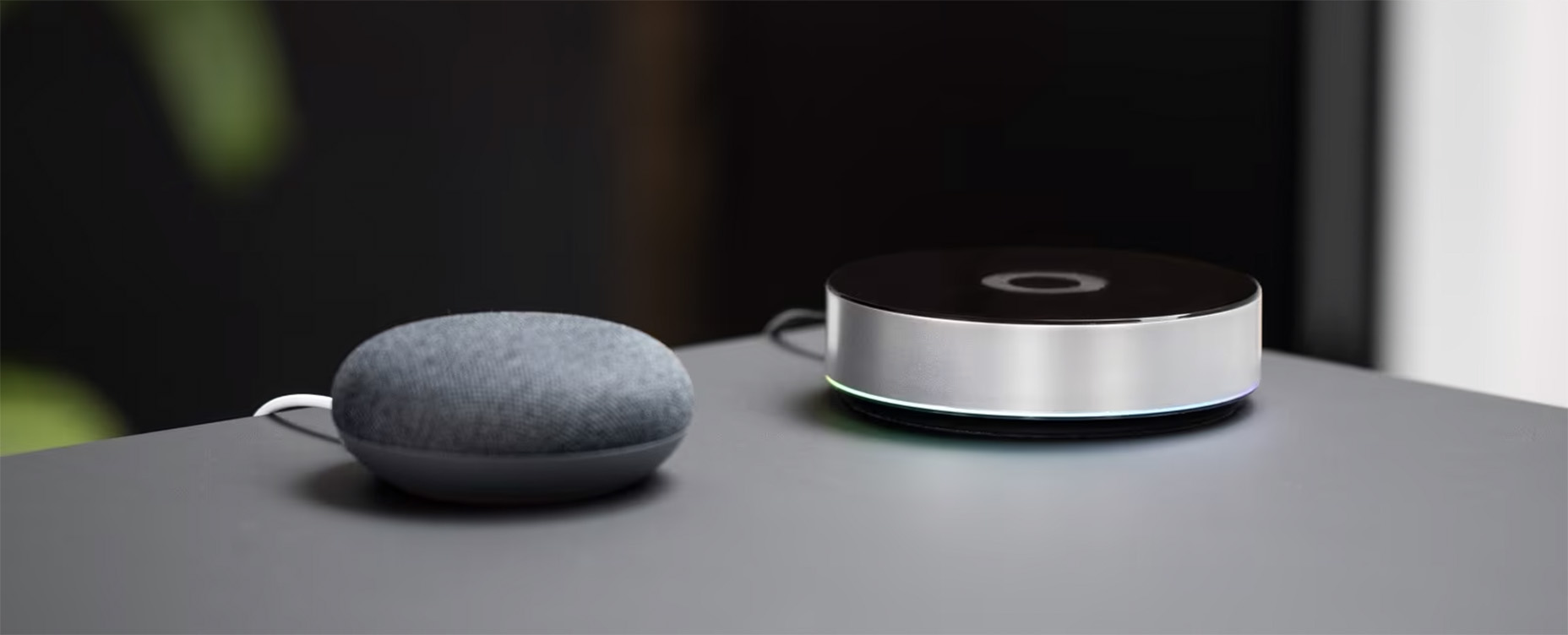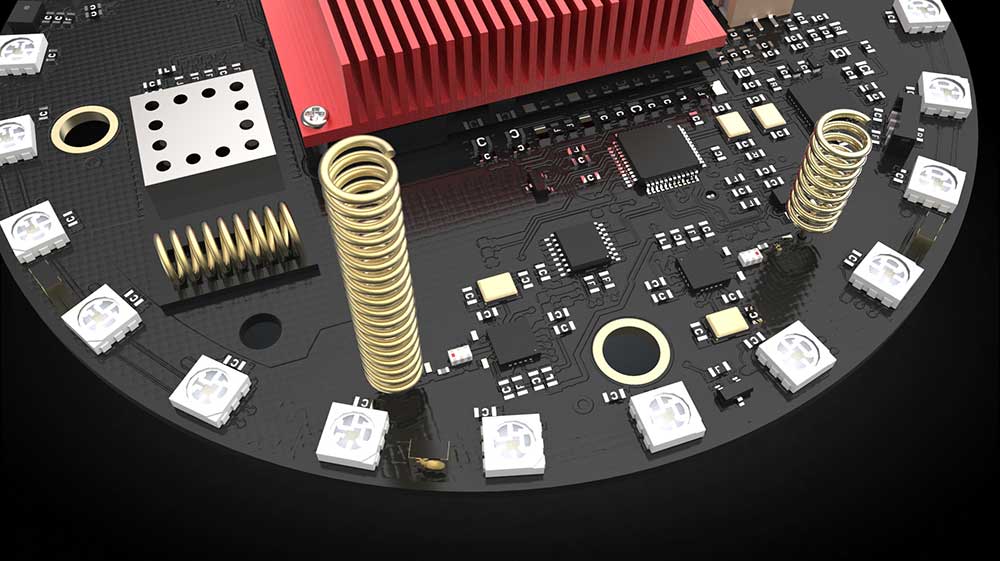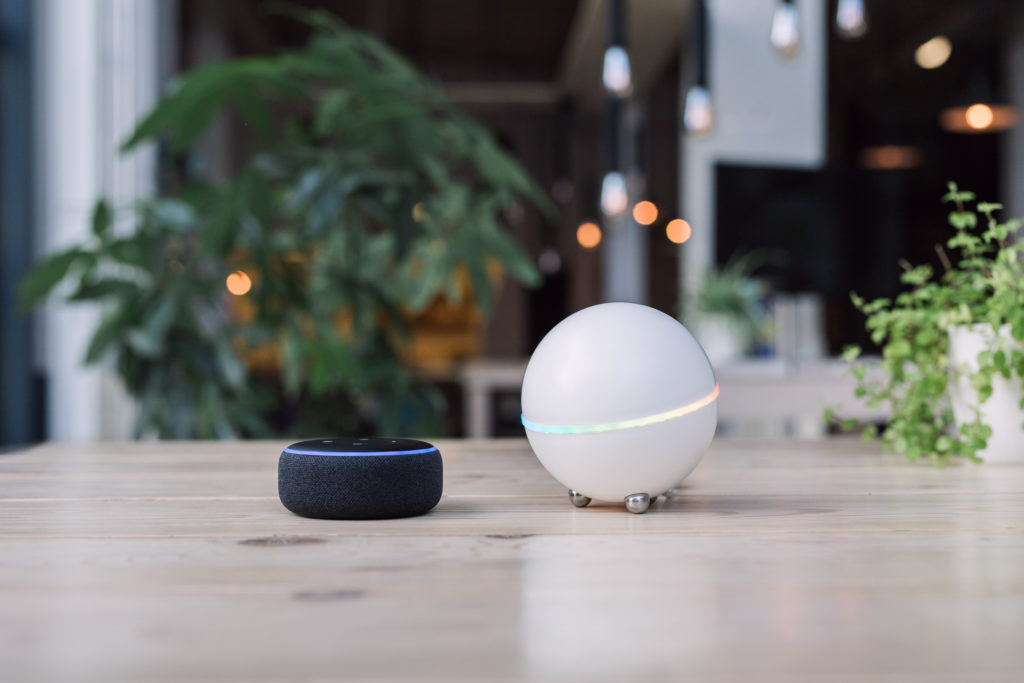
Homey Pro & Google Home – diferencias, compatibilidad y colaboración
“Homey is a Smart Home platform designed to combine all your wireless and smart devices at home in one place.” This is the explanation we often give to describe Homey in one sentence. To which many people respond: “Like Alexa?” That’s a perfectly logical question. Our answer? “Ehhhh, somewhat…”
Just like Homey, Alexa does ‘smart home things’. However, while they share some characteristics, there are also many differences between the two. Homey and Alexa products complement each other far better than they replace one another.
Note: for simplicity’s sake, we’ll compare Homey — including the platform and ecosystem — to an Echo device with Alexa and its ecosystem. The same reasoning applies to other Alexa-powered devices, which helps us avoid discussing minor differences such as comparing Homey to an Alexa-powered fridge.
Differences Between Homey and Alexa
Let’s start with the core of each platform or device. This already highlights a major difference. At its core, Homey is a Smart Home platform. That means its primary purpose is to combine all your devices at home into one system — including control, automation, monitoring, and more. Alexa, on the other hand, was designed as a voice assistant. Its main goal is to help you perform a wide range of tasks through voice commands — from ordering a pizza to playing Jeopardy and, to some extent, controlling devices.
This difference in focus means the two systems excel at different things. Alexa is great at voice control and interaction, and at handling common actions across a variety of tasks. Homey, on the other hand, excels at managing your smart home. There are several areas where Homey differs from Alexa: connectivity, automation, analytics, and privacy.
Connectivity of Homey and Alexa
Let’s start with connectivity. Both Homey and Alexa can connect to smart devices. However, for a device to connect to Alexa, it must be cloud-connected. Technically, there’s no other way to connect to Alexa. On the other hand, to connect to Homey, a device can be cloud-connected — for example, a smart thermostat. But not all your devices live in the cloud.

That’s why Homey also connects to devices through your local network and to devices that are wireless but use other technologies than Wi-Fi. This includes connectivity via 433 MHz, used for products such as smart plugs and motorized blinds; Zigbee, for smart lights like IKEA TRÅDFRI; Z-Wave, used by wireless motion sensors and door sensors such as Fibaro; and infrared, to control your TV, Xbox, or stereo.
All these devices don’t exist in the cloud. Sometimes it’s possible to connect them through the cloud, but that usually requires a hub or gateway per brand or device. Homey connects directly to these devices and makes them a native part of your smart home. Homey can even — if you want — make them available in the cloud so you can link them to Alexa, even if the brand itself doesn’t directly support it.
Homey and Alexa Automation
Besides connectivity, automation is another key point. For automation, there’s Homey Flow — a uniquely powerful way to connect everything in your smart home. You might be thinking: “What about Alexa Routines?” And you’re right. However, Alexa Routines are very limited compared to Homey Flow.

Routines can be triggered in one of five ways: voice, time, device, arrival/departure, or an Echo button. That sounds interesting, but some of these options don’t fully deliver on their promise. Take “device (input)”, for example. Without a Samsung SmartThings Hub or Echo Plus, you can’t even use devices to trigger routines. With Homey, however, you can use any connected device to start Flows. Want the hallway light to turn on when the door opens? No problem. Want to turn off the music when you switch on the TV? Done.
Another major difference is the “and…” condition in Homey Flow. This is something Alexa doesn’t have. It allows a Flow to automatically stop or behave differently when certain conditions are met. For example, no push notifications from your doorbell after 10:00 PM on weekdays, or having your motion sensor turn the bathroom light to only 10% brightness after bedtime.
Having these extra options is crucial for creating an elegant and well-functioning smart home experience.
Insights Into Your Home
This next part might appeal more to the tech enthusiasts. Of course, it’s great to control and automate your smart home exactly the way you want. But another great thing about smart homes is that you can gain insights into what your home has been doing. With Homey Insights, you can easily track what’s happening in your home: what has the living room temperature been throughout the week? How much power has my fridge used?

With Homey, you can view this information — and it’s stored exclusively for you. Which ties in perfectly with our final point: privacy.
Privacy of Your Data on Homey and Alexa
Amazon is a service provider. They sell products and deliver ads based on what you want or find interesting. This means all your Alexa data is used to “know what you want” and to build a profile about you. Amazon can then use this profile of your data.
Homey, on the other hand, is a product you pay for — along with the smart home experience it delivers. We don’t create profiles based on your behavior. The information your home generates is yours alone. Our Privacy Principles prohibit us from using your personal data in any other way.
For some quick voice commands, the difference might not matter much. But when it comes to connecting your entire home, privacy becomes much more important for many people. The choice you need to make is whether you’re comfortable with Amazon knowing when you’re home, watching TV, or going to sleep.
| Homey | Alexa | |
|---|---|---|
| Connectiviteit | met de cloud verbonden apparaten en lokale apparaten via Wi-Fi, 433 MHz, ZigBee, Z-Wave, infrarood.... | alleen met de cloud verbonden apparaten |
| Automatisering | uitgebreid en veelzijdig | beperkt |
| Analyse | ja (Homey Insights) | nee |
| Privacy | privacy-principes, geen profilering of persoonlijke gegevens verzameld | ontworpen voor profilering en verzameling van persoonlijke gegevens |
| Spraak | via integraties van derden zoals Facebook, Google Home of Alexa | direct geïntegreerd |
Homey and Alexa Work Together
As mentioned in the introduction, Alexa and Homey are likely better at working together than replacing one another. Both have very different implementations of some key smart home features, which makes them work better together than as standalone alternatives.
Alexa depends on gateways and hubs. It needs them to bridge the connection between many devices and the cloud. And this is where the combination of Alexa and Homey comes in. With Homey, you connect all your devices at home — from various brands and technologies — and manage your entire home through one user-friendly app. At the same time, Homey can act as a gateway for Alexa, making all your connected devices available in Alexa too!

If you want a solid smart home system, you now know what Homey can do for you. And if you also want Alexa’s excellent voice control, simply combine your Homey with an Echo Dot and enjoy the best of both worlds.






